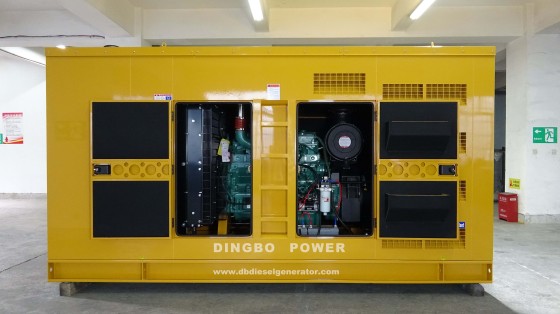Electricity plays an important role in our daily lives and it may cause inconvenience and potential risks to us when the supply of power fails. Fortunately, emergency diesel generators can provide a reliable power supply during power shortages. To ensure the generators work smoothly in the event of a power cut, regular maintenance is essential. In this article, we will explore several important things you need to know about maintenance of your emergency diesel generator.
What is an emergency diesel generator?
An emergency diesel generator is a device that is often designed to mainly run fuel oil and can supply electrical power to a facility during a blackout or emergency. These generators serve as a backup source of power when the main source of power fails. They are typically configured to start automatically when there is a power loss and assume essential facility loads until the utility power returns.

Why generator maintenance is important?
Regular maintenance of diesel generators ensures that the emergency power is ready when needed most. Improper or poorly maintained emergency diesel generator sets are more likely to fail when you need it. To prevent costly downtime or damage due to malfunction, the generators should be regularly inspected, cleaned, and tested.
Regularly maintaining a generator can maximize its efficiency and prolong the life span of the generator. You can avoid expensive repairs with proper generator maintenance practices and save money in the long run.
What is the routine maintenance of emergency diesel generator?
Generally, generator maintenance consists of preventative maintenance and corrective maintenance. The former is performed at regular intervals to reduce the failure rate and the latter involves repairs that are found and corrected before causing an operational failure. Below are some important maintenance jobs that need to be carried out in emergency diesel generators:
Perform regular visual inspection
Please be noted that no matter whether your emergency diesel generator set is used frequently or not, regular visual inspections are necessary. Check the exhaust system, fuel system, DC electrical system and the engine of your generator periodically to prevent any leaks or other types of malfunctions. Inspect the spark plugs, air filter, oil filter and other components for any damage or blockages and correct any adverse conditions promptly to prevent major problems in the future.
Check oil lubrication
Lubrication oil can protect internal engine parts such as cylinder liners from damage caused by foreign particles. Thus, you need to check the engine oil level by using a dipstick at regular intervals when the engine is shut down. It is essential to use the recommended oil type and top it up when necessary. Bear in mind that the oil and filter should also be changed at particular time intervals. Follow the manufacturer's guidelines for oil change intervals to ensure the smooth operation of the emergency diesel generator's engine.
Check cooling system
As an important component of the emergency diesel generator set, the cooling system ensures the smooth and interruption-free functioning of the generator. Check the coolant level periodically during shutdown periods. Make sure the cooling fluid you use is fitted to your engine. In addition, check the radiator and remove any dust or debris discovered without damaging the fins. Monitor the discharge temperature and make sure the coolant heater is running properly.
Inspect fuel system
Regularly inspect the fuel delivery system visually for leaks and correct pressure while running the engine. Diesel fuel degrades over time. To minimize the risk of corrosion of diesel, you should inspect tanks regularly to identify and remove excess water. You’d better run the generator from time to time to use up the stored fuel before it degrades. It’s recommended that you test and polish the fuel regularly if the fuel is not used and replaced in a time span of 3~6 months. To ensure optimal performance and longevity of your generator, you should change the fuel filter, clean the vents, test piping or connections, and test fuel quality annually.
Inspect starting batteries and wiring
A bad battery can result in unexpected failures, so you should inspect the batteries regularly and replace them when necessary. Usually, the batteries of emergency diesel generators have a life cycle of 24 months or 36 months. You need to replace them towards the end of this lifespan. It’s also important to test the battery's voltage periodically and replace it if any issues arise due to it.
Make sure the battery cables and terminals are kept clean and free of corrosion and all engine wiring should have tight connections.
Perform a load bank test regularly
Load banks provide an artificial load and allow you to test the generator under various load conditions. A load bank testing enables you to know whether your generator has the capacity to work in an emergency situation. Performing a load bank at regular intervals allows any flaws or problems to be exposed before a critical situation.
Read more about regular maintenance of diesel generators.
The recommendations above will ensure your emergency diesel generator works properly as expected when there is a power shortage.
Don’t hesitate to reach out for any further information or assistance regarding to generator maintenance. Get in touch with Dingbo Power today and we will gladly help you.
Dingbo Power is always ready to provide the most efficient power solution. Our high-quality diesel generator sets of different sizes and prices can perfectly meet your specific needs. You can find us at dingbo@dieselgeneratortech.com.
Comments
Post a Comment